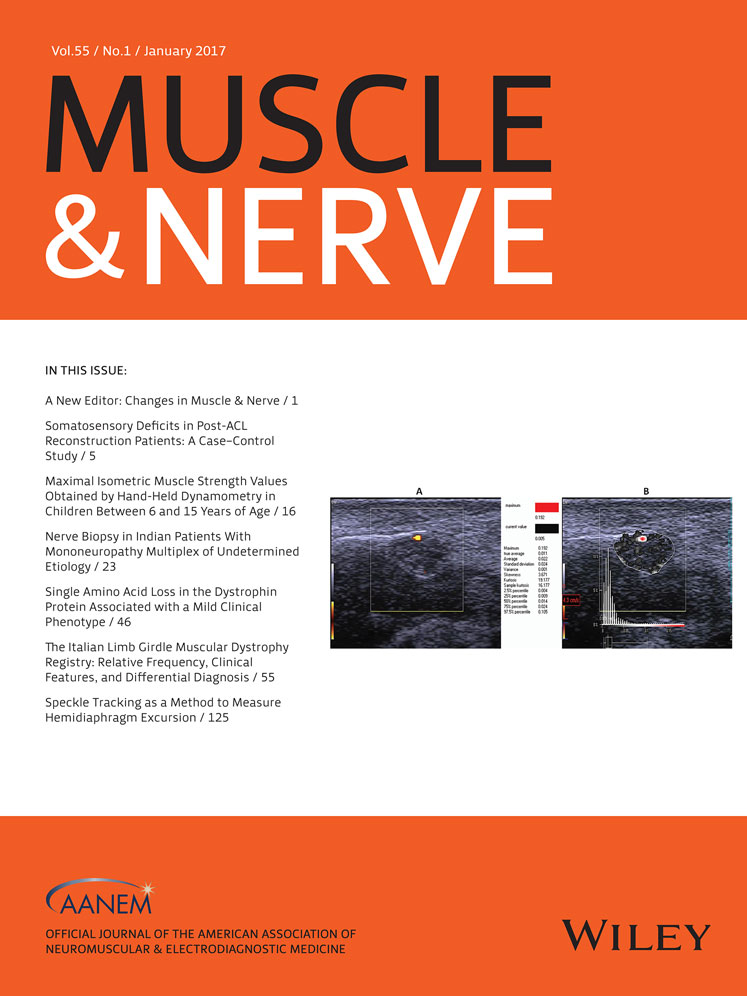Determining jitter values in the very young by use of the e-norms methodology
ABSTRACT
Introduction: The diagnosis of myasthenia gravis in very young infants is a challenging one. In young infants, stimulated single-fiber electromyography (StimSFEMG) is the most appropriate technique, but it has serious limitations due to the absence of reference values in this subpopulation. Here we present our efforts to derive a reference range of jitter in a patient cohort of infants <3 years of age using the extrapolated norms, or e-norms, technique. Methods: The e-norms method was used to calculate jitter mean consecutive difference (MCD) descriptive statistics for children <3 years of age. Results: The e-norms derived jitter upper MCD limit was 45 μs in children <1 year, 33 μs in those <2 years, and 26 in those <3 years of age. Conclusion: In the absence of jitter reference values for the very young, the e-norms method can be used as an alternative to derive these values from laboratory cohorts. Muscle Nerve 55: 51–54, 2017




